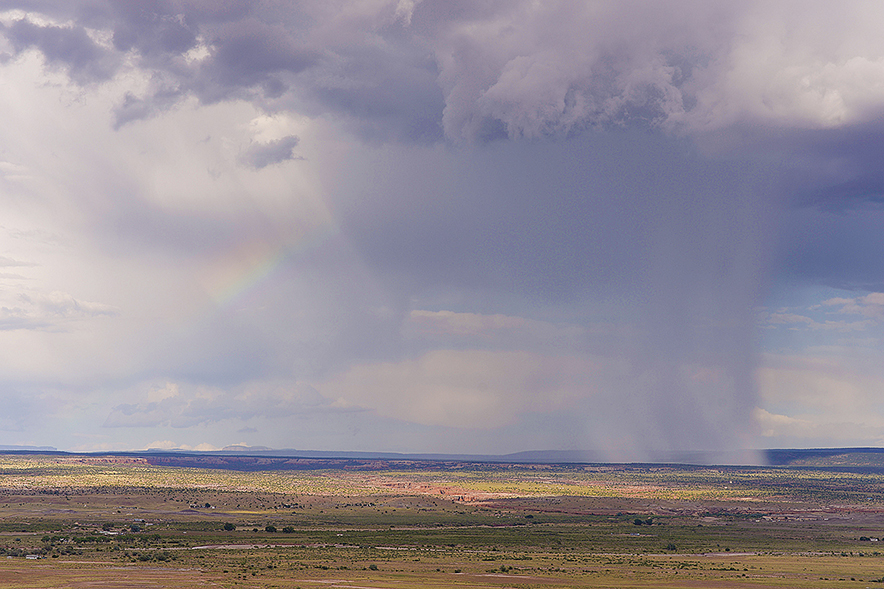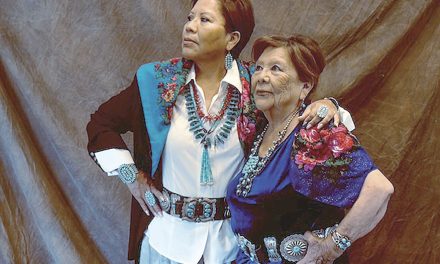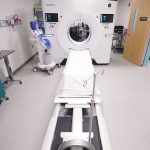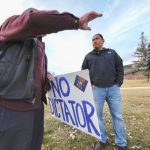
Flooding and power outages hit communities across the Navajo Nation

Special to the Times | Donovan Quintero
Water runs brown with mud in Leroux Wash, a tributary of the Little Colorado River, south of Indian Wells and north of Holbrook, Ariz., on the morning of June 28.
WINDOW ROCK – The recent rainstorms and subsequent power outages have created a wave of challenges across multiple regions within the Navajo Nation.
The Navajo Department of Emergency Management initiated an emergency-level response to address the impacts of these disruptions, as reported by DEM representatives Vince Scott, a temporary emergency liaison, and Lyla Smallcanyon, a senior office specialist, during a Naabik’íyáti’ Committee meeting on June 27.

Special to the Times | Donovan Quintero
Heavy rainfall moves across Nazlini, Ariz., on the afternoon of June 28.
The disruptions caused by the rainstorms includes communication system failures, widespread power outages, interruptions in water support systems, flooded transportation routes, and minor damage to residential structures. There have been no reported injuries or fatalities as a result of these incidents.
To address the severity of the situation, the DEM activated varying Emergency Operations Center levels, engaged in collaborative efforts, and swiftly mobilized resources to distribute crucial supplies and tackle infrastructure challenges.
One of the key response actions involved the collaboration between the DEM and Utah Navajo Health System Inc. to set up cooling stations and emergency power services for residents in Utah Navajo. Essential supplies such as water, blankets, first-aid kits, and hygiene kits were delivered to affected communities to ensure the well-being of residents.
Scott said 360 cases of water were delivered to Utah Navajo, 782 cases were delivered to Sanostee Chapter, and 216 cases were delivered to Sweet Water and Teec Nos Pos chapters. Thirty-three non-perishable food boxes – including medical supplies, 28 blankets, 45 first-aid kits, and 56 hygiene kits – were delivered to Utah Navajo residents.
The restoration of power and water in impacted communities was a priority, with efforts by the Navajo Tribal Utility Authority and Rocky Mountain Power being instrumental in bringing back essential services. However, ongoing issues in some areas like Dennehotso and Dilkon highlight the persistent challenges faced by communities dealing with the aftermath of the storms.

Special to the Times | Donovan Quintero
Floodwater covers a portion of State Route 77 on the morning of June 28.
The DEM, alongside other agencies including the Navajo Division of Transportation and Navajo Police Department, has been conducting assessments to determine the extent of the impacts on communities. This includes evaluating road closures, structural damages to homes and buildings, and assessing the needs of residents for assistance.
As the response efforts continue, the DEM has received and addressed numerous requests for assistance from 23 chapters across the Navajo Nation. These requests have ranged from water and food supplies to power restoration and road repairs, demonstrating the wide array of challenges faced by communities in the wake of the storms.
“Seventy-six of the seventy-seven requests have been successfully addressed,” Scott said, adding that the DEM also helped high-priority people who rely on electricity or on medication that require refrigeration. The DEM and the Utah Navajo Health System also offered relocation assistance for people.
During the Naabik’íyáti’ Committee meeting, concerns were raised by delegates regarding the DEM’s operational plan for addressing flooding and power outages. Suggestions were made to improve communication strategies, establish dedicated emergency management plans, and ensure open channels for communication during emergencies.
Delegate Eugenia Charles-Newton said the Navajo Nation was blessed with heavy rain, but some people aren’t prepared for severe weather.
“What really worried me is insulin,” Charles-Newton said about families who faced power outages and needed to keep their medicine and groceries cool. She said some families couldn’t travel to their nearest store for ice because of wash-out roads and the influx of gas prices.
Despite the challenges and concerns raised, the DEM remains committed to providing ongoing support and aiding in the recovery efforts to safeguard the health and safety of the Navajo Nation. Collaborative efforts with various partners, ongoing distribution of essential supplies, infrastructure repairs, and continuous assessments are all part of the comprehensive approach taken by the DEM to address the aftermath of the recent incidents.
While the road to full recovery may be long and challenging, the dedication and resilience displayed by the DEM and its partners reflect a commitment to standing strong in the face of adversity and ensuring the well-being of all those affected across the Navajo Nation.








 Highway 264,
Highway 264, I-40, WB @ Winslow
I-40, WB @ Winslow